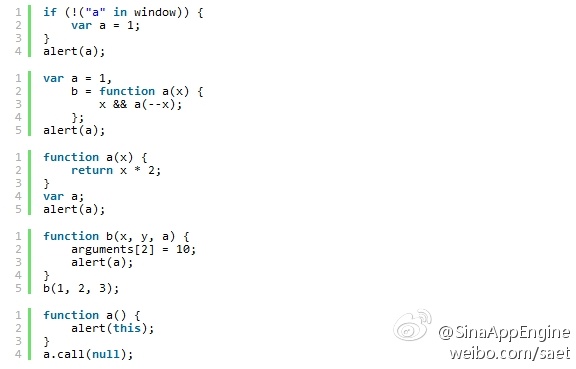I came across a small test called “Do You Really Understand Javascript?” on SAE’s microblog. Although it consists of only a few lines of code, it highlights some easily overlooked issues.
Here’s the original image from the microblog:

Result of the first code snippet: 1
Javascript does not provide block-level scope, so the variable a inside the if statement’s {} is visible outside.
Result of the second code snippet: 1
Here, the function name and the variable name are the same, but
var b = function a () {};
in this usage, a is ignored. This means the function a does not affect the value of the variable a.
Result of the third code snippet: Outputs the function itself
It should be noted that people generally wouldn’t write code like this = =!, but since it’s written this way, first
function a() {};
after execution, the value of a is the function itself,
var a;
after execution, a is not actually assigned a value, so a remains itself. If you execute
var a = 1;
and then output a, it would be 1.
Result of the fourth code snippet: 10
When a function receives parameters, they are stored in the arguments array, and the parameter definitions x, y, a point to the 0th, 1st, and 2nd positions of arguments, respectively.
So, changing arguments naturally changes the output of a.
Result of the fifth code snippet: window
When using
function.call(null);
or
function.call(undefined);
the this of the function is bound to window. Therefore, the output of this is window.